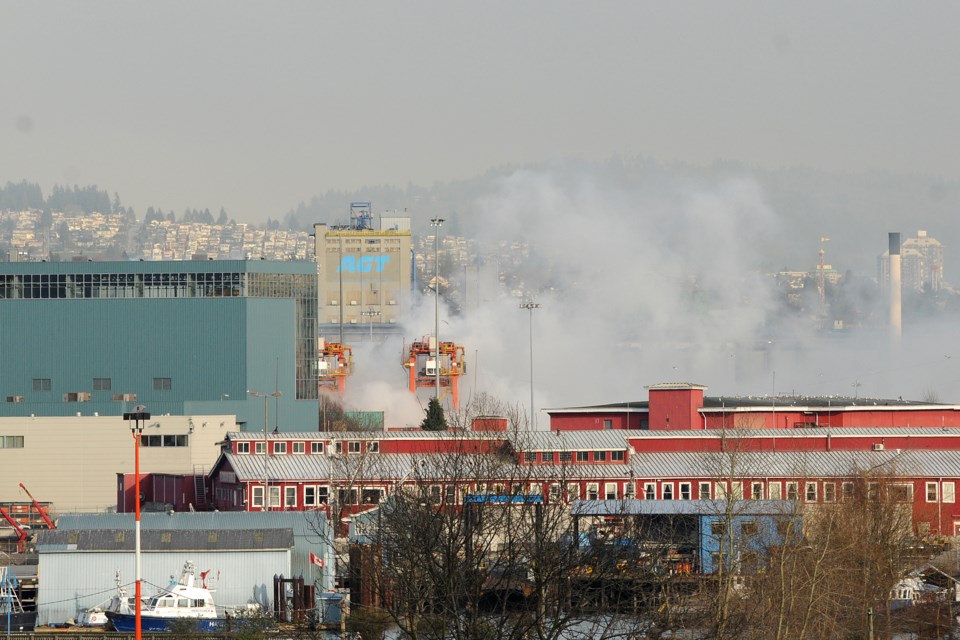Saturday’s mistaken alert, which warned Hawaii residents and vacationers alike of an incoming missile, grabbed headlines across the globe — and the attention of Daniel Stevens, Vancouver’s director of emergency management.
“My first thought was it has the potential to shake the public’s confidence in such a system, certainly given the topic of that warning,” he told the Courier Monday.
The alert, which popped up on cellphones and was broadcast through news media read: “BALLISTIC MISSILE THREAT INBOUND TO HAWAII. SEEK IMMEDIATE SHELTER. THIS IS NOT A DRILL.”
Thirty-eight minutes later, people were informed the message was sent in error. An emergency management employee pushed the wrong button twice during a routine drill, according to reports.
Stevens learned about the incident from his wife who was scrolling through the news on her smartphone on the weekend. The false alarm reminded him of a similar incident in Japan in early January.
That country’s early warning system misread two minor earthquakes as a larger one, which resulted in an alert being sent to mobile phones and shut train services down.
Emergency systems in Canada and Vancouver operate differently.
The federal government’s “Alert Ready” initiative is the country’s broad system, which works with provincial and territorial partners. It interrupts radio and television broadcasts and informs the public about emergency situations such as tornados on the prairies.
Changes are afoot, however, that will see it supplemented with a similar system to what Hawaii has in place.
Hawaii’s system allows officials to push alerts out to cellphones — individuals don’t need to subscribe to the service. Rather, emergency messages can be sent to every phone that’s connected to a particular cell tower in a prescribed area.
“Through the CRTC, they’ve mandated that a similar system will be in place, or be supported by wireless carriers, by April of this year… it will be integrated into the Alert Ready system coast to coast,” Stevens said. “So when an alert is issued that will go onto your TV or radio broadcast, the technology will be in place to also broadcast to people’s cell phones directly.” (Information about Alert Ready can be found at alertready.ca.)
Local governments don’t currently have a direct feed into the federal government’s alert ready system. However, officials are advocating that local governments have access to send out a subset of alerts that would apply in a local context.
“B.C. has been fairly receptive but it’s a number of years away before those types of details get worked out here,” Stevens said. (Information about the provincial government’s emergency preparedness measures can be found here: http://ow.ly/I4Id30hNmuy)
The City of Vancouver, in any case, is responsible for dealing with civil emergencies such as fires affecting multiple buildings or chemical spills only.
When the city needs to get local emergency information out to the public, various means are used, including sending information through the print and broadcast media, through the city’s website and social media channels, and through the city’s “vanconnect” app.
“In recent years, we’ve been beginning to push out information through our vanconnect app,” Stevens said. “We’ve used those [alerts] for snowstorm-type issues and, I think, for extreme heat as well.”
When there’s an immediate need, the city augments those efforts by sending first responders out to drive through neighbourhoods or knock on doors to advise residents about emergencies.
That happened in 2015 when there was a fire at the Port of Vancouver and the city issued a shelter-in-place advisory for parts of East Vancouver.
Human error is possible is possible in Vancouver’s systems, but not as likely as in more technologically advanced systems.
“Our systems aren’t quite as automated and there’s more human intervention than in some of these broader systems that have pre-set messages that are hard-coded into a system and you just hit send and it fires it off,” Stevens said. “So that type of error is lower. Also, the types of alerts that we would be issuing at a local level are for civil emergencies… large fires, a chemical spill, those types of things — not something that’s akin to a missile coming to blow up an area. That’s going to cause a completely different level of panic and human emotional response to a fire or chemical spill or something like that. The federal government is going to be dealing with that kind of issue.”
Meanwhile, although Vancouver is in an earthquake region, advisories are a challenge to issue because there’s little advance notice.
“Currently, other than some localized alerting in buildings, there’s no provincial-wide official earthquake text message-type system like we see in Japan,” Stevens said. “But there are efforts with Ocean Networks Canada, UBC and the provincial government in terms of developing that type of system.”
However, an earthquake early warning system was installed in the city building at Cambie Street and West 10th Avenue as part of a pilot project when the building was being seismically upgraded.
Catholic schools in Vancouver also have an earthquake warning system through a partnership with UBC.
@naoibh



